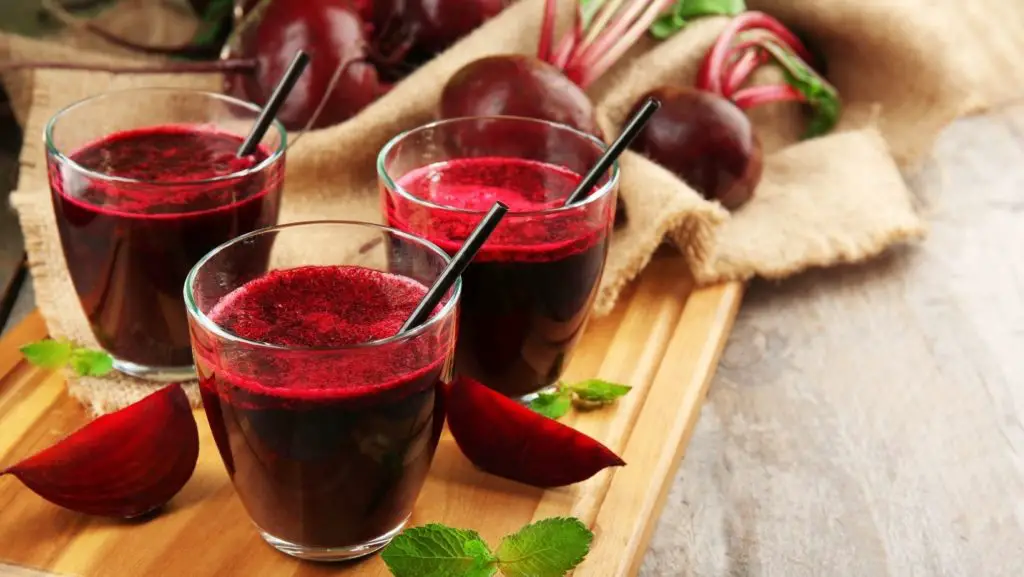Juicing is an excellent way of incorporating more fruit and vegetables into your diet if you live a busy lifestyle.
However, buying juices out can become expensive quickly. If you don’t have a juicer in your kitchen, you might be wondering if you can save money by making your juices at home with a blender.
In this article, I cover some key information about juicing. From the benefits of juicing to how to juice without a juicer, by the end of this article you’ll be much more informed on how to juice at home.

Keep reading to find out more.
Believe it or not, making juice without a juicer is possible. Whether you don’t have the space for one or simply can’t afford a juicer, learning how to juice without a juicer is easier than you think.
Benefits of juicing
- Juicing your fruits and vegetables means that you may get more concentrated, more easily absorbed nutrients. This comes down to the fact that the bulk of the vitamins and minerals found within a fruit are typically in the juice.
- If you struggle to eat your greens, juicing may also allow you to stomach the taste of an array of fruits and vegetables.
- Some people believe that consuming fruits and vegetables without fiber gives your body a break from the hard work of digestion.
A guide on how to juice without a juicer
Equipment that you’ll need
- A blender
- A fine mesh strainer
- A large mixing bowl
- A rubber spatula
Ingredients
- 3 cups kale, stems removed
- 1 small cucumber, quartered
- 1/2 ripe pineapple, cut into chunks
- 1/2 green apple, seeds and stem removed
- The juice from half a large lemon
Instructions
- Begin by preparing your vegetables. Wash your ingredients well, and cut them into large chunks.
- Once you have chopped up your pineapple, apple, kale, cucumber, and the juice from half a lemon, place them all into a blender. Blend until the mixture is smooth, being mindful to add a splash of filtered water to help it along if it gets stuck.
- Place a fine-mesh strainer over a large mixing bowl and pour the juice through the strainer. Make sure that you press down with a rubber spatula to extract the juice, and let it sit for a few minutes to encourage a bit more juice to drip out.
- Discard the pulp to one side. You can save it to add to other smoothies.
- Once you have strained the juice, it’s time to serve. Pour the juice into a serving glass and enjoy immediately.
- If you have any leftover juice, cover it and place it in the refrigerator.
Juicing tips
- If you try juicing, make only as much juice as you can drink at once. Not only does it always taste the best when it’s fresh, but also harmful bacteria can grow quickly in freshly squeezed juice. Additionally, fresh juice loses its nutrients quickly and has a tendency to separate the longer you leave it.
- Adding kale to your juices can make it a little bitter. To avoid this, you will need to balance it out with the sweetness of pineapple to keep it from becoming too bitter.
Is juicing cheaper than buying juice?
Yes, in terms of ingredients, juicing at home is cheaper than buying juice out somewhere. That being said, this doesn’t mean that you need to buy a juicer especially to carry out the job.
If you don’t have the money or space for a juicer, fear not. While it’s more work, using a blender can work to make your juices at home, and it’s much more cost-effective to make your juices rather than buy them. That being said, you will need to carry out the extra step of straining your juice when you are using a blender as opposed to a proper juicer. Additionally, by nature, there are going to be some juice recipes that would work better in a juicer.
Once you’re more confident with your juice recipes, you may want to invest in a juicer in the future. However, when you’re just starting out, it’s not necessary if you don’t mind straining your juice yourself!
Is juicing healthy for you?
Juicing is a convenient way of incorporating more greens into your life if you live a fast-paced, busy lifestyle. The liquid contains most of the vitamins, minerals, and plant chemicals (phytonutrients) found in the fruit.
That being said, juicing is no healthier than eating a balanced diet that contains lots of whole fruits and vegetables.
While juicing is delicious, a caveat you should be mindful of is that the sugar is a big downside, especially if you’re using juicing to lose weight. There’s a reason why the dentist is always telling you to drink nothing other than water on a daily basis! Some commercial fresh juices contain as much, or even more sugar than some sodas. Bearing this in mind, juicing should be something that you do in moderation, even if you are saving money by juicing at home!
Additionally, whole fruits and vegetables also have healthy fiber, which is lost during most juicing. While some people argue this is better for digestion, smoothies contain fiber that helps you to feel fuller for longer. This is arguably better for someone that is trying to lose weight. However, this is a contentious debate and which you prefer will come down to your own personal goals and preferences.
In summary
You don’t need a juicer to make juices at home! A standard blender will work, but you will need to strain the fruit and vegetable pulp in order to make it a juice as opposed to a smoothie.
Make sure that you always squeeze as much juice as you can out of the pulp through a strainer to avoid waste.
While juicing is delicious, you should be mindful of how much sugar there is in your juice and should only drink it as part of a healthy, balanced diet.
